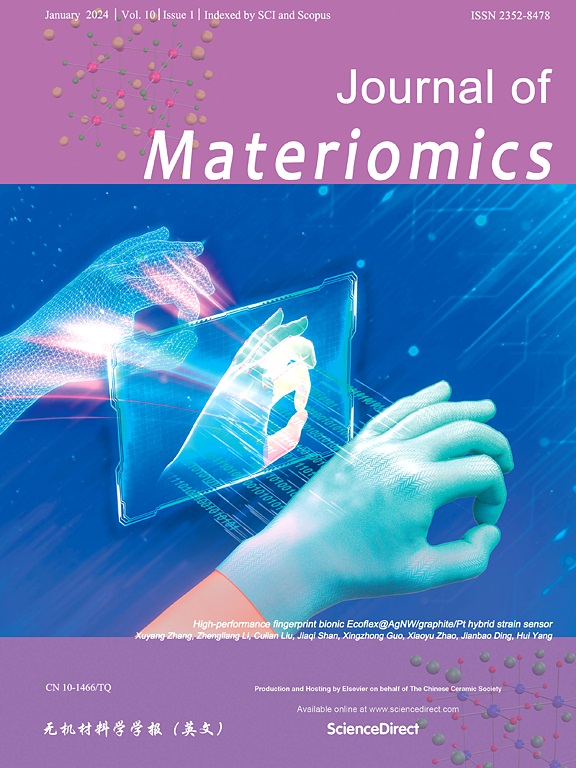A novel cellulose-derived graphite carbon with abundant defects for excellent environmental adaptability and superior wideband microwave absorbents
IF 8.4
1区 材料科学
Q1 CHEMISTRY, PHYSICAL
引用次数: 0
Abstract
It is still an enormous challenge to regulate microstructure of pure carbonaceous electromagnetic (EM) wave absorbents in order to gain superior wideband microwave absorption (MA) with environmentally adaptive ability. Herein, the novel pure cellulose-derived graphite carbon materials (CGC) with abundant defects were fabricated via the self-assembly strategy combined with simple carbonization for the first time. The EM and MA performance of as-prepared CGC with different carbonization temperatures were studied in detail. The minimum reflection loss of CGC was up to −46.2 dB (over 99.99% MA) at only 1.42 mm, and the maximum effective absorption bandwidth (EABmax, RL < −10 dB) was as wide as 6.32 GHz. The greatly improved MA of pure carbon materials outperformed those of many previously reported carbon-based composite absorbents with tedious preparation process. The excellent MA property was attributed to the optimal synergy of good impedance matching and satisfactory EM attenuation capability. Besides, the CGC still retains a strong and broadband MA ability in the simulated real harsh environmental conditions (acid rain/alkaline solution, salt spray and strong UV exposure). Hence, the CGC is believed to be a very promising candidate as high-efficiency EM wave absorbents with wide frequency and excellent environmental adaptability for practical application.

一种具有丰富缺陷的新型纤维素衍生石墨碳,可提供出色的环境适应性和卓越的宽带微波吸收剂
如何调节纯碳质电磁(EM)吸波材料的微观结构,以获得具有环境适应能力的优异宽带微波吸收(MA),仍然是一个巨大的挑战。本文首次通过自组装策略结合简单碳化,制备了具有丰富缺陷的新型纯纤维素衍生石墨碳材料(CGC)。详细研究了不同碳化温度下制备的 CGC 的电磁和 MA 性能。仅在 1.42 mm 时,CGC 的最小反射损耗高达 -46.2 dB(超过 99.99% 的 MA),最大有效吸收带宽(EABmax, RL < -10 dB)宽达 6.32 GHz。纯碳材料大幅提高的 MA 性能优于之前报道的许多制备工艺繁琐的碳基复合吸波材料。优异的 MA 特性归功于良好的阻抗匹配和令人满意的电磁衰减能力的最佳协同作用。此外,在模拟的真实恶劣环境条件(酸雨/碱性溶液、盐雾和强紫外线照射)下,CGC 仍能保持强大的宽带 MA 能力。因此,CGC 被认为是一种非常有前途的高效电磁波吸收体,具有宽频率和出色的环境适应性,可用于实际应用。
本文章由计算机程序翻译,如有差异,请以英文原文为准。
求助全文
约1分钟内获得全文
求助全文
来源期刊

Journal of Materiomics
Materials Science-Metals and Alloys
CiteScore
14.30
自引率
6.40%
发文量
331
审稿时长
37 days
期刊介绍:
The Journal of Materiomics is a peer-reviewed open-access journal that aims to serve as a forum for the continuous dissemination of research within the field of materials science. It particularly emphasizes systematic studies on the relationships between composition, processing, structure, property, and performance of advanced materials. The journal is supported by the Chinese Ceramic Society and is indexed in SCIE and Scopus. It is commonly referred to as J Materiomics.
 求助内容:
求助内容: 应助结果提醒方式:
应助结果提醒方式:


